5. Disney California Adventure
Image: Disney
Location: Disney California Adventure at Disneyland Resort
The Plus: A new foundational identity that recasts everything else in a new light
It may sound wild to suggest that an entire park can be "plussed," but rest-assured, the "plussing" of Disney California Adventure Park did not happen overnight.
When the park opened in 2001, Disney's lofty expectations for the "hip, edgy" park with an "MTV attitude" quickly fizzled. At Disneyland, guests would travel to historic, reverent, idealized lands of nostalgic Americana mixed with fantasy and romance. Just steps away at Disney's California Adventure, they'd find a plywood Hollywood set of Hollywood, a cold, open plaza of concrete and corrugated steel, or a modern beach boardwalk of carnival freak posters and off-the-shelf carnival rides. The resort's intensely-loyal, generations-long audience of Southern Californians balked at the low-budget, cartoon park that intentionally styled itself as a "spoof" of modern California.
And worse, California Adventure wasn't just a fly-by-night box office failure that would eventually disappear. It was permanent, which made it a permanent scar on Disneyland... unless executives got serious. They did, with a 5-year, $1.2 billion reconstruction effort that literally tore each themed land to the rivets and rebuilt them in the style of Disneyland – historic, reverent, idealized lands. The incredible transformation injected Disney character, storytelling, and a park-wide Californian continuity, uniting the themed lands into one majestic narrative. You can catch up on the full, in-depth story of the most ambitiously grand redesign Disney's ever deployed in its own in-depth feature, Disaster Files: Disney's California Adventure.
...And you can see that careful Californian story and detail disintegrate as Disney took a creative wrecking ball to the park's Lost Legend: The Twilight Zone Tower of Terror just a few years later. The towering pueblo-deco lost Hollywood Tower Hotel transformed into a gaudy, garish sci-fi superhero warehouse / prison / power plant visible from each of the park's themed lands. But don't worry – Imagineers assure us that it's only the first step in giving the park a new Marvel land modeled on New York City! ...Wait. ...Huh?! Ah well... for at least few years, California Adventure got to be a creative companion to Disneyland, and it was nice while it lasted.
4. The Little Mermaid: Ariel’s Undersea Adventure
Location: Disney California Adventure and Magic Kingdom
The Plus: A few small changes add up to a very significant difference
Video: The "Old Lighting" vs. the "Plussed Lighting"
Since the film’s premier in 1989, fans have been clamoring (no pun intended) for a theme park attraction based on The Little Mermaid. The beloved film kicked off the Disney Renaissance and is a renowned piece of animation in its own right. When the film’s Platinum Edition DVD was released, the bonus features included a CGI conceptual ride-through of a dark ride designed around the film, probably for Disneyland Paris. While it never came to be, it signaled that Disney understood and was looking into the idea of a Little Mermaid ride.
A ride finally did come to fruition thanks to Disney California Adventure’s billion-dollar rebuild, when Ariel’s Undersea Adventure opened in June 2011 inside a 1910s aquarium on Paradise Pier. The dark ride immediately earned negative feedback from fans who found it charmless. They cited some (admittedly awkward) animatronics, abrupt pacing, and very unusual lighting that didn’t look at all like a classic Disney dark ride’s signature blacklight glow, much less like you were actually Under The Sea. Instead, the ride’s main room was lit in orange and green with literal spotlights and disco balls pointed at shiny, plastic fish animatronics.
Astoundingly, Disney appeared to listen and react, closing the ride for a little at a time as small changes improved the experience. (One day, if we’re lucky, all evidence of the “ice cream hair” will be lost to time.) Finally, in March 2014, it closed for two full months, during which time the ride was overhauled. New figures filled the empty corners and small changes to the animatronics did at least a little bit of good. But most impressively, the ride’s signature “Under The Sea” scene was redressed in blacklight, giving it the classic, glowing, signature look of a Disney dark ride. The figures glow and the now blue-and-purple rooms looks much more watery while the lowered lights disguise the lighting fixtures that were so apparent before. Magic Kingdom’s ride got the same facelift in March 2015, though both versions still lack a real finale.
3. Spaceship Earth
Location: Epcot
The Plus: Keeping up with the times is a good look for Epcot's thesis ride
Epcot was always meant to represent a living showcase of modern technology and stories. Unfortunately, time seems to be slowly and ironically conquering a park that’s meant to bring progress to life. Luckily, at least a few rides have been salvaged from the creep of time. The park’s signature attraction has to be Spaceship Earth, the epic 15-minute dark ride through the park’s icon of the same name.
Technology has absolutely flown forward since the park’s opening in 1982, and if Spaceship Earth were still running on that era’s technology, it would be a shame indeed. Instead, Disney has consciously kept that attraction very updated. The ride’s most recent update – its fourth major overhaul – was in 2008 with new scenes, lighting, costumes, score, and narration via Dame Judi Dench that all give the ride a very current and modern style.
It’s fitting that a ride originally meant to be the park’s Communication Pavilion has been consistently “plussed” to stay current. Especially as the world presses bravely into the 21st century, ideas of communication, interconnectedness, and the global neighborhood are more important now than ever before.
2. Star Tours: The Adventures Continue
Location: Disneyland and Disney's Hollywood Studios
The Plus: A complete overhaul gives a fan favorite ride unlimited new potential
When Star Tours opened in Disneyland’s Tomorrowland in 1987, it represented the future. Sincerely. First, it used unprecedented flight-training simulator technology in an entertainment role for the first time. Second, it represented Michael Eisner’s thesis statement: that movies could be great springboards for rides in Disney Parks, and that those movies did not necessarily have to be Disney movies! Disney Parks fanatics will want to check out our in-depth Lost Legends: Star Tours feature that dives behind-the-scenes into the creation of the original and the way it altered the course of the parks forever.
The ride became a staple of Disney Parks and remained that way well into the 2000s as classic as ever. But by 2010, the ride was beginning to show its age. As parks began to use crystal clear HD 3D technologies, the tired grainy film of Star Tours was looking antiquated, and repeat rides were rarer and rarer. Disney saw its chance. In one of the most epic “plusses” of any park, Star Tours was rebuilt as Star Tours: The Adventures Continue.
Technically a “prequel,” set before the original ride, Star Tours now has a few changes. Very little feels different in the queue (except from fun cameos by stars from the original ride) but once you board your Star Speeder, things will be different. Literally. The ride has 54 different combinations that send you to different planets on each and every ride, so you’re unlikely to ever get the exact same ride twice in one vacation. And of course, the ride is in ultra-clear 3D. Now, Star Tours is again a game-changer that outpaces any of the competition’s simulator rides, and just that quickly, a heavy-duty “plussing” brought the ride into the future.
1. Test Track
Location: Epcot
The Plus: An entirely new aesthetic creates an unprecedented ride experience
Test Track at Epcot has always been a fan favorite. Originally, the ride cast guests as living “crash test dummies” in a GM testing plant. The ideas was that aboard newly-built cars, guests were put through the paces just like a real new prototype might be: slaloming between cones, testing anti-lock brakes, passing over rough terrain, and accelerating along hairpin turns. Even though it was mostly fun, it was somewhat informative to get a sense of what a real car is put through to test its features and durability. The final test saw the car accelerate toward an impact barrier (the kind you see on car commercials where the vehicle crashes and the airbags go off) only to have the barrier separate like an elevator door at the last second as the car launched into an outdoor speed-testing portion. The tour was also narrated by two GM employees who described each test before it began.
To pull off the “testing facility” illusion, the ride was decked out in orange traffic cones, overhead spotlights, traffic lights, plywood trees, and traffic signs that all fit the style very well. But entering into the new decade, it wasn’t enough. In ten years, things had changed and a new look was much trendier than the clunky industrial testing facility. So Test Track was reborn.
The ride re-opened in December 2012 in a form that’s entirely unrecognizable. Now a sleek, modern showcase of Chevrolet designs, the heart of Test Track is its interactivity. Now, guests get to use computer kiosks in line to design their own vehicle, starting with a silhouette line. As they do, they’re encouraged to consider balancing Capability, Efficiency, Responsiveness, and Power by choosing features that create any kind of vehicle they can imagine.
Then, riders use their park ticket or MagicBand to bring their concept vehicle along with them, scanning it just as they enter into the ride vehicle – now a “SimCar.” The ride itself might as well be themed to TRON as the SimCar traverses a digital landscape, enduring many of the same tests as in the original ride, but now cast as simulations in a glowing, sleek computer world. As the ride passes through the four testing zones of Capability, Efficiency, Responsiveness and Power – each marked by different neon-colored landscape – the results of your own personally designed vehicle are shown for each of the tests. If you designed a monster truck with massive wheels, you’ll score very well in Power, but you might have the lowest score of anyone in your car in Efficiency. We love both the "old" and new Test Tracks so much that we told the complete story of the ride's origin, opening, and evolution in its own full feature, Lost Legends: TEST TRACK.
Totally unrecognizable apart from its layout and vehicles, the new Test Track is sincerely the best modern evidence of Disney’s “plussing” in motion. Like all attractions, some dislike the new style. But by adding interactivity to the process and some real artistry to the ride, Test Track is entirely fresh for a new generation. And man is it cool.
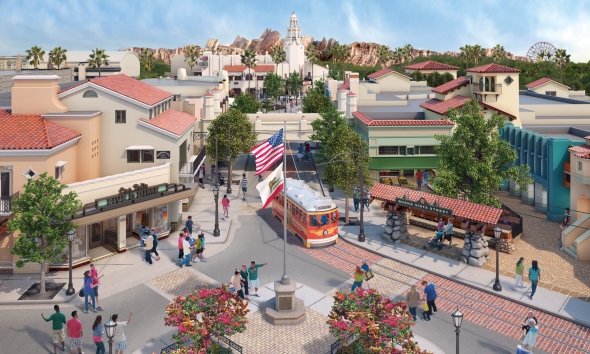
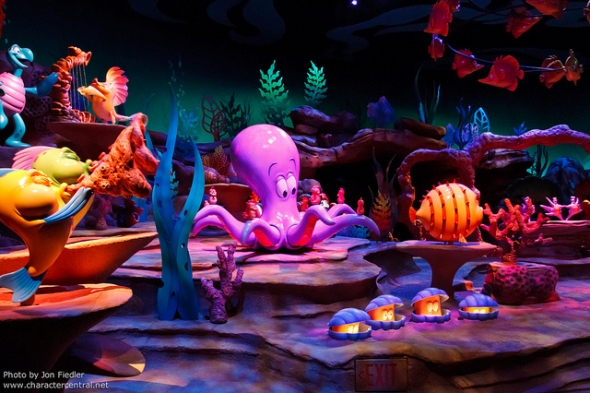
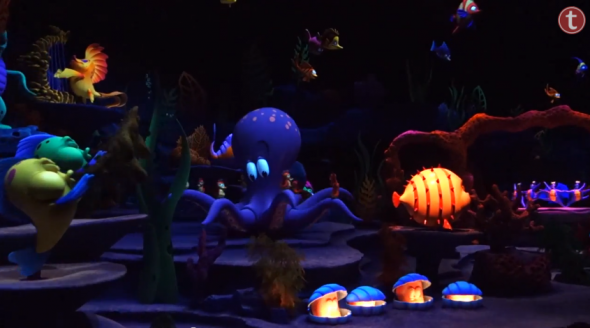
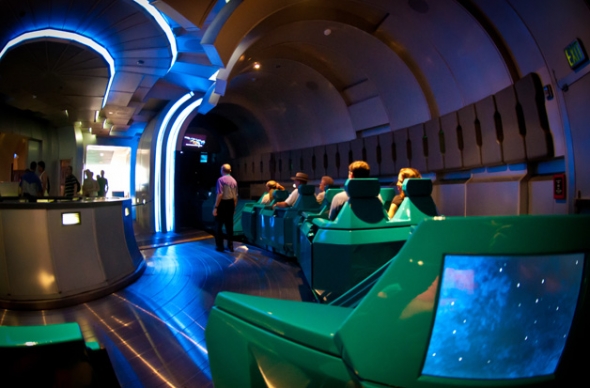
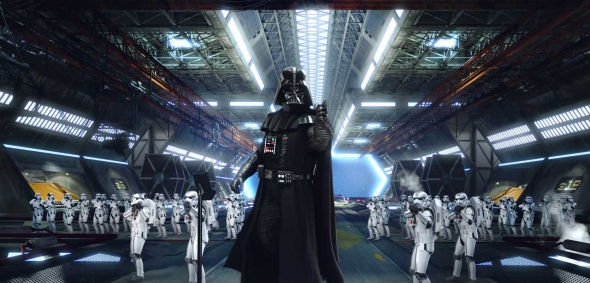
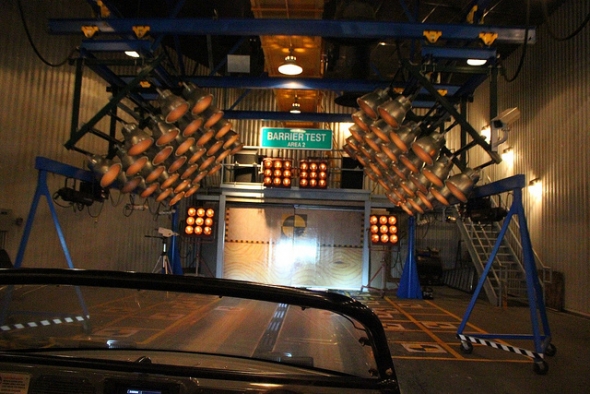
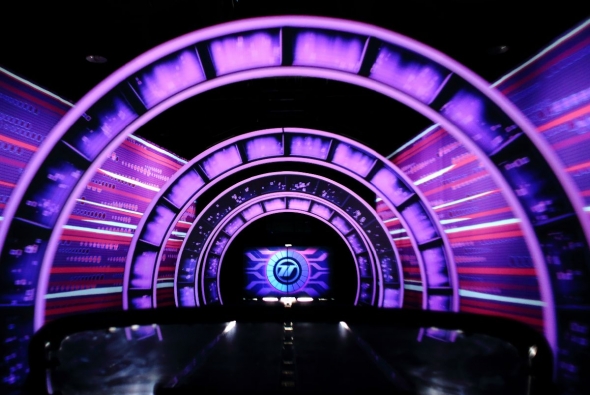

Comments
Ummm... Pirates? Let me be honest. I, like nearly everyone, was against the idea of Sparrow and Barboza being added to the ride. However, my opinion changed immediately when I first went on it saw how well they fit in. I was expecting this change to top the list.